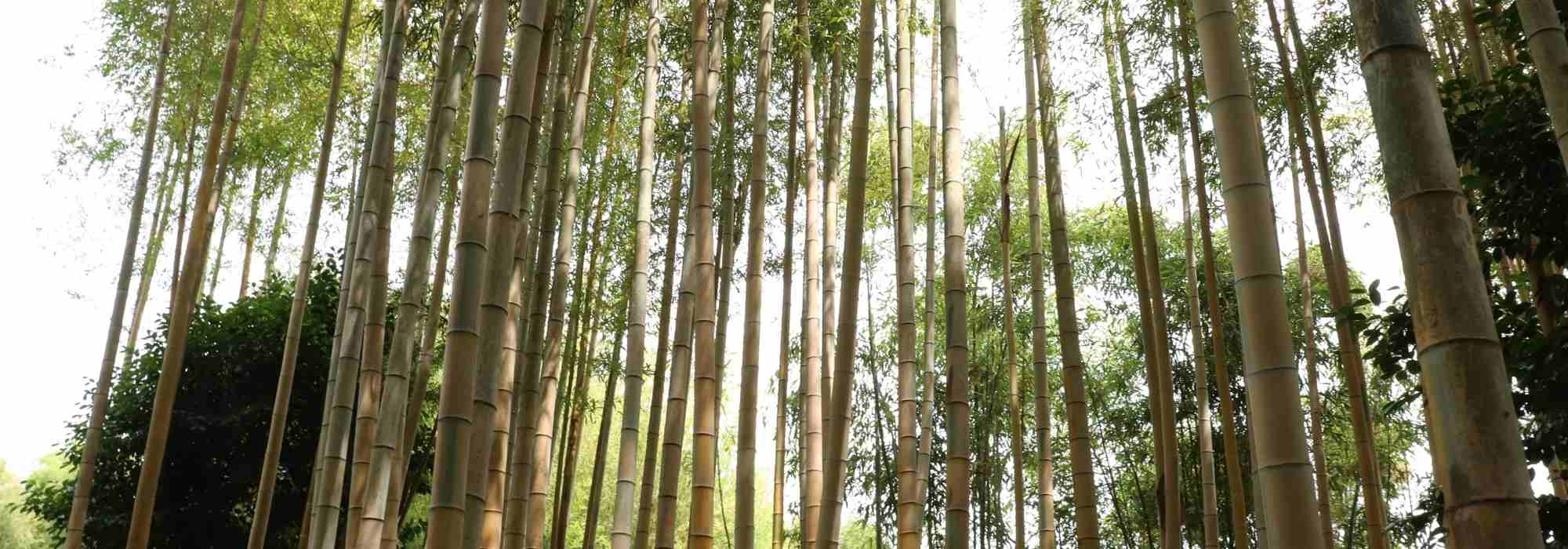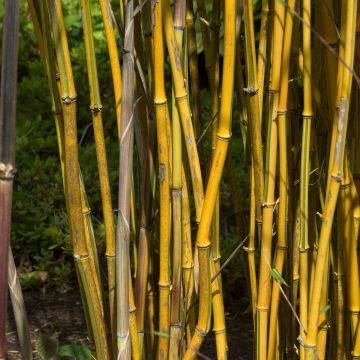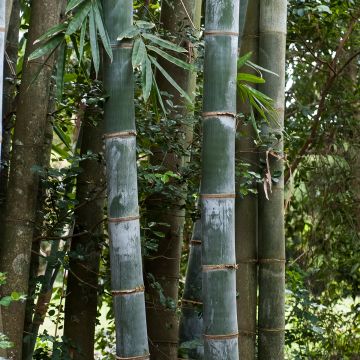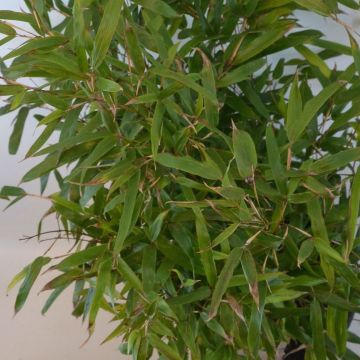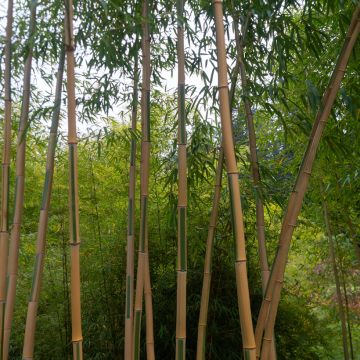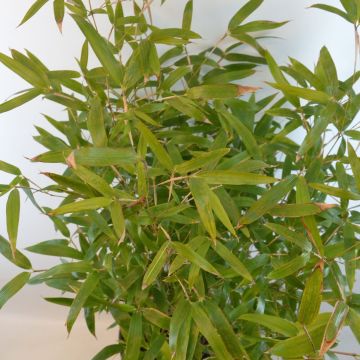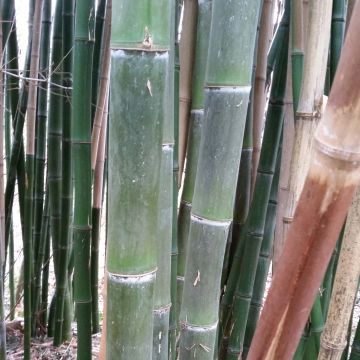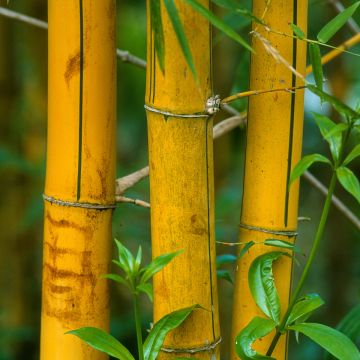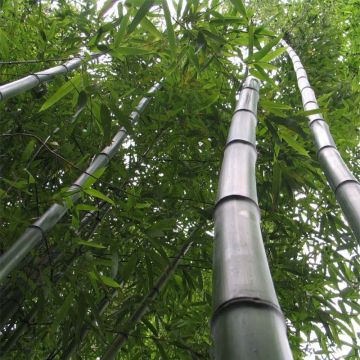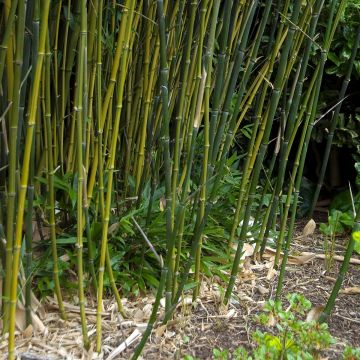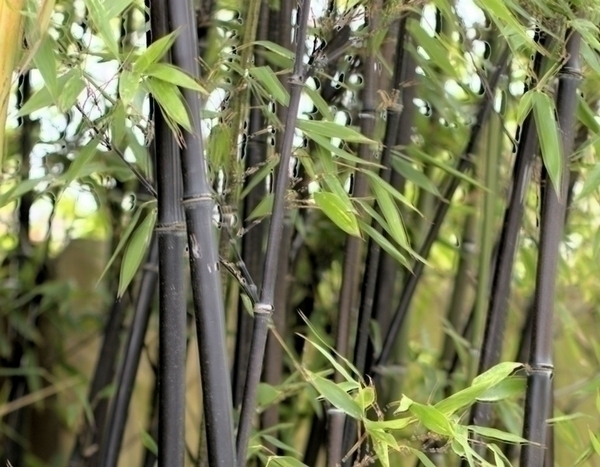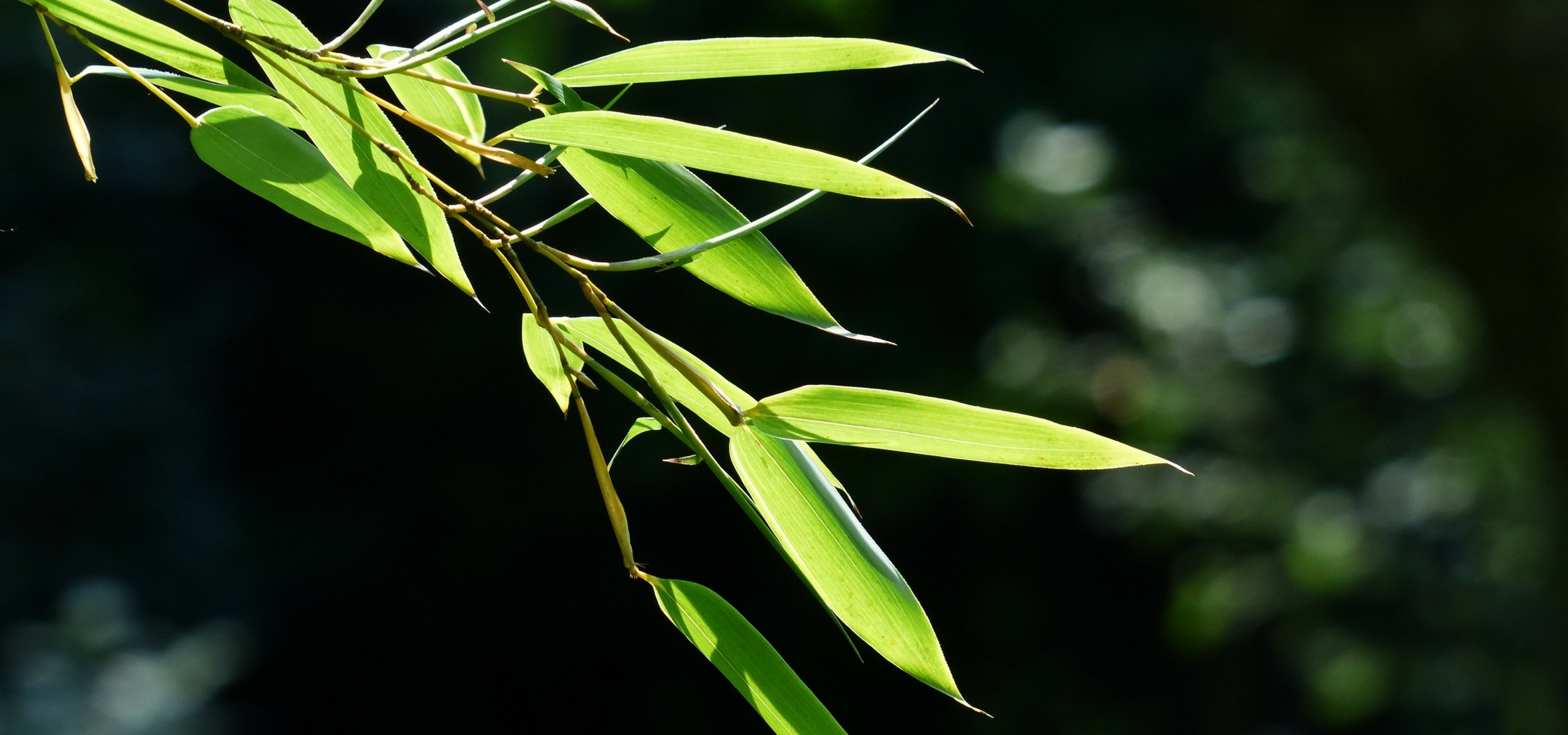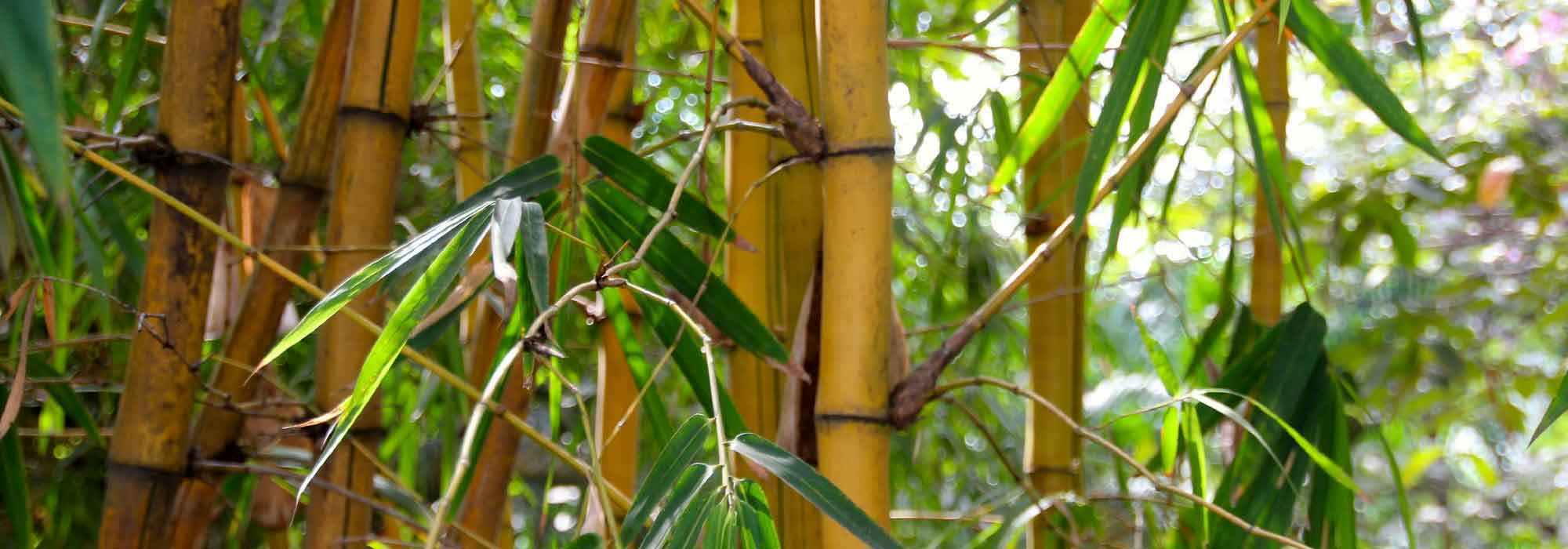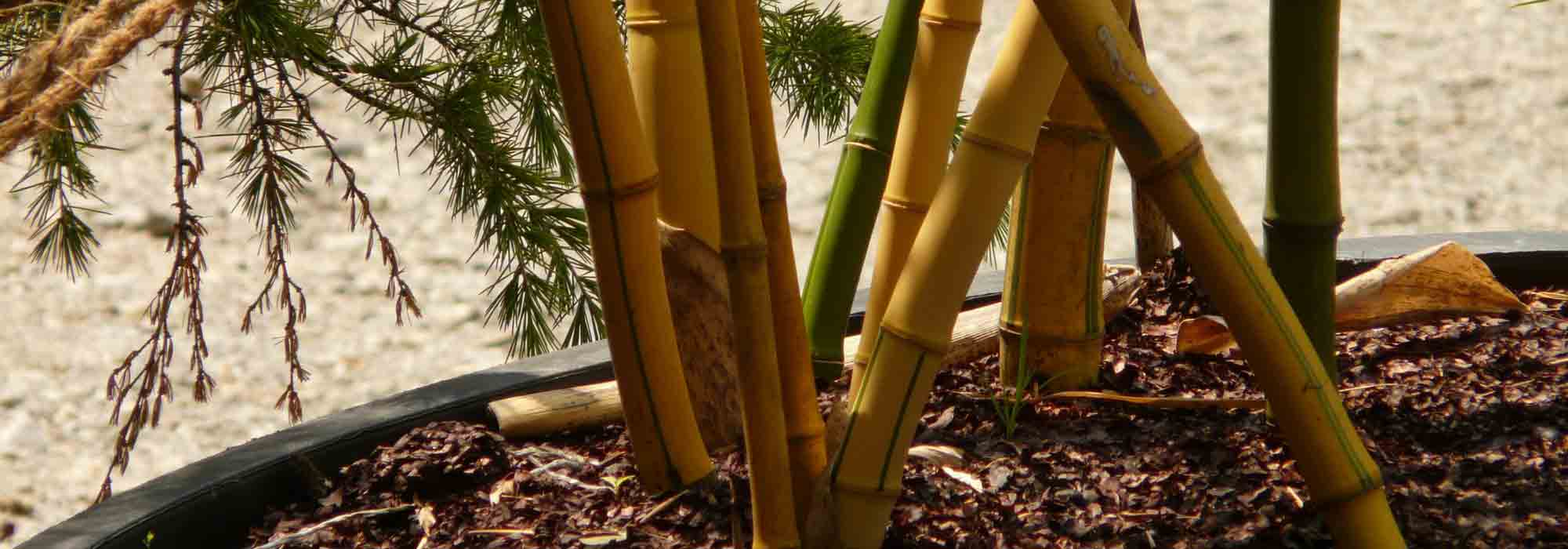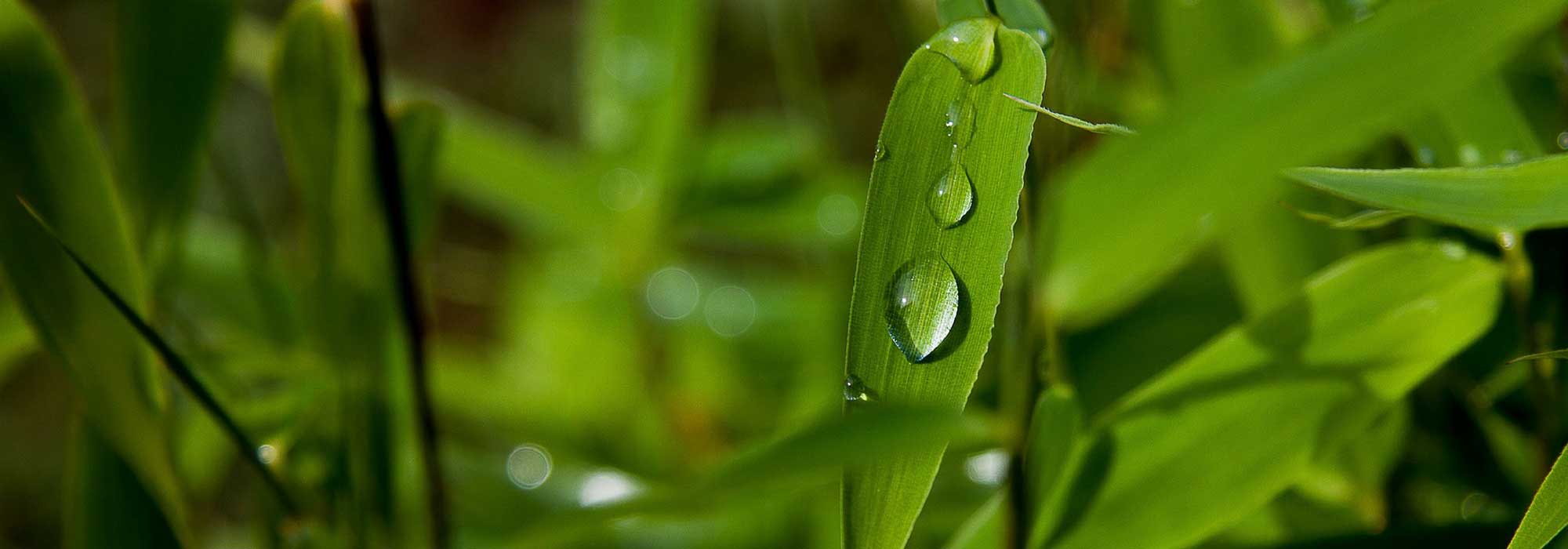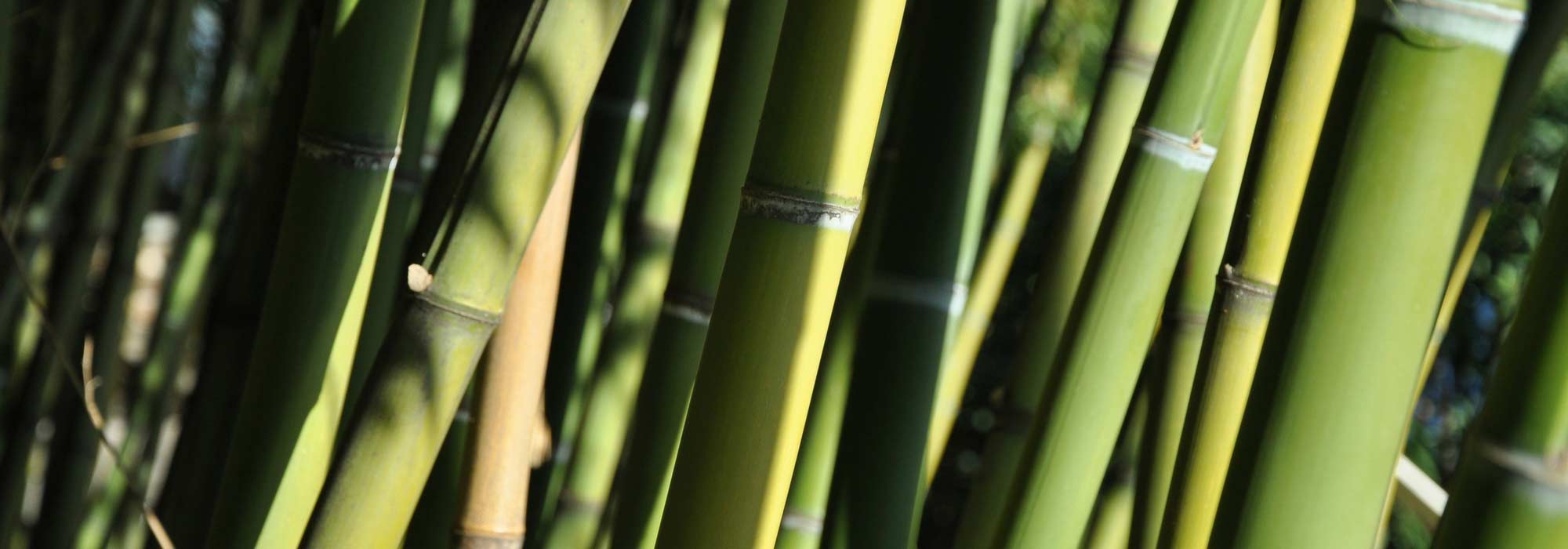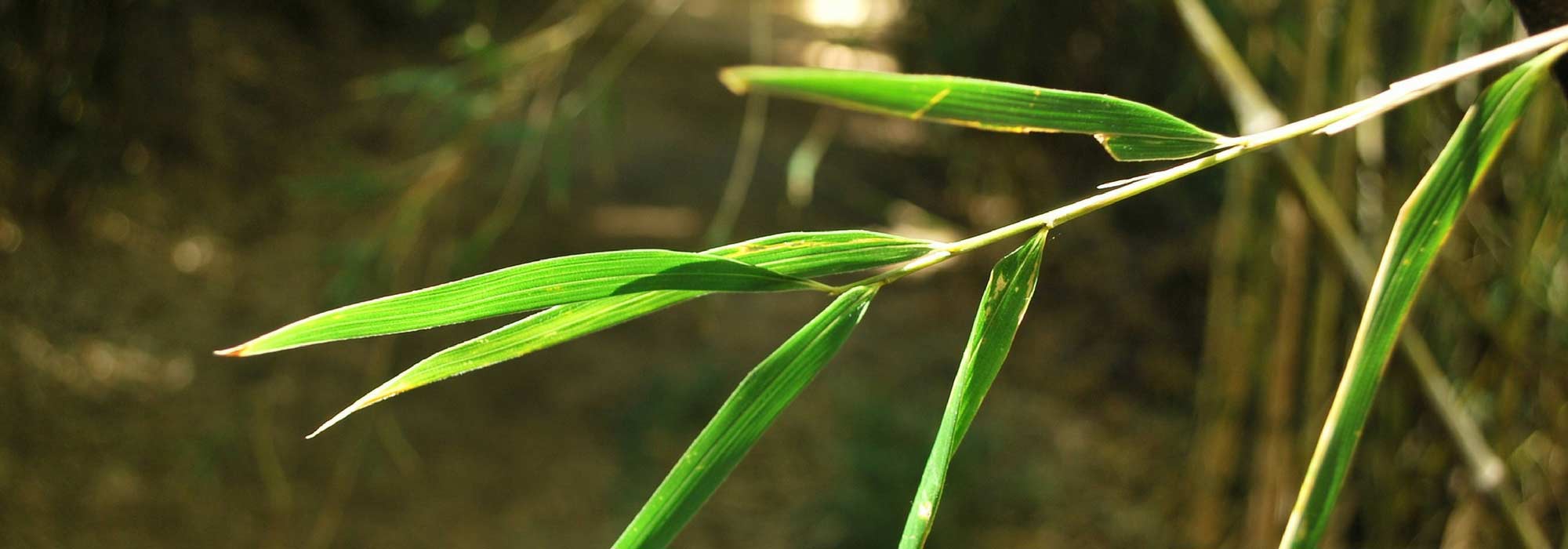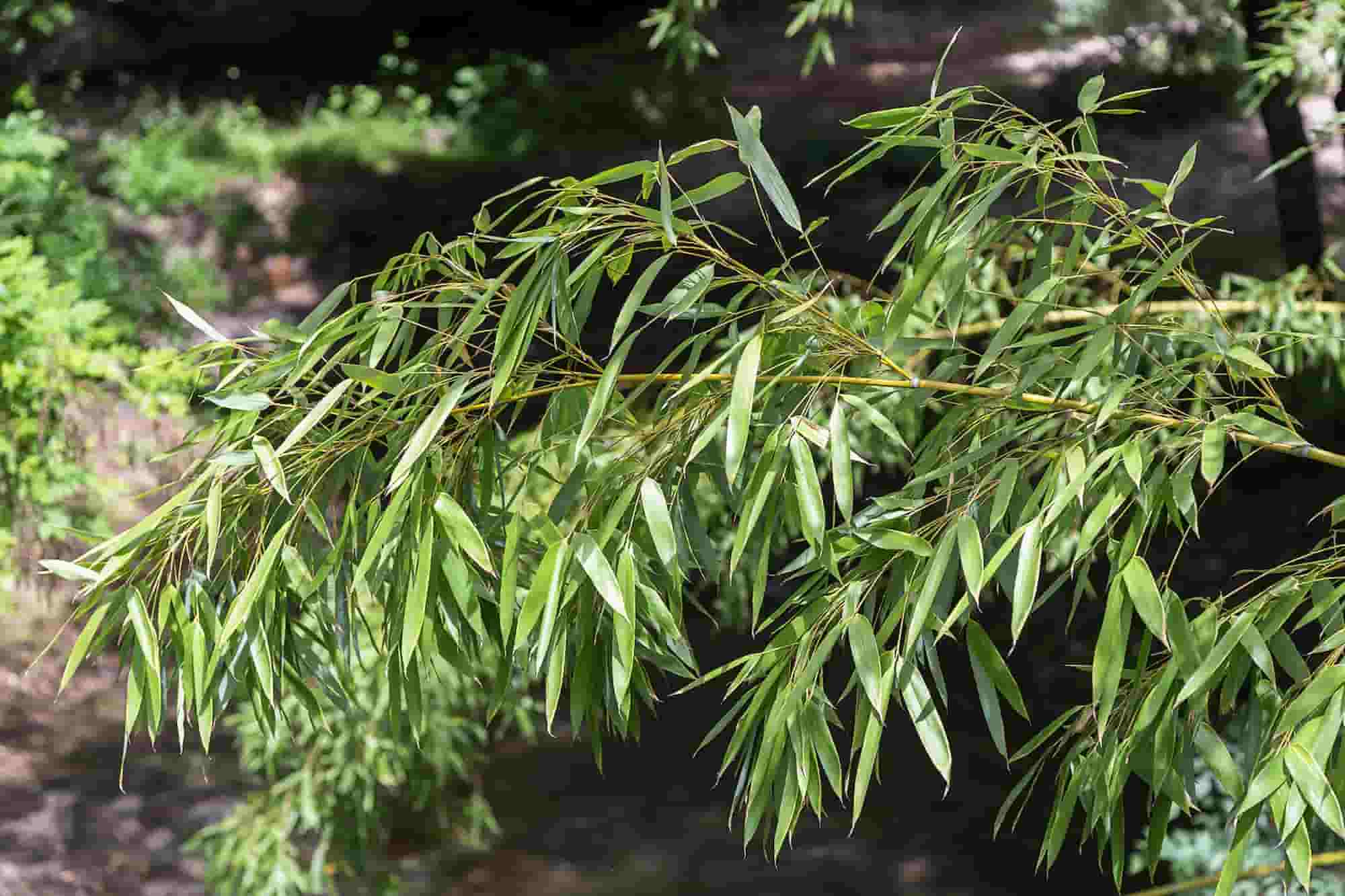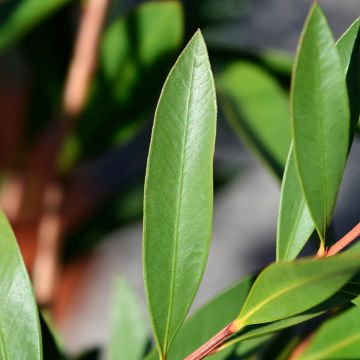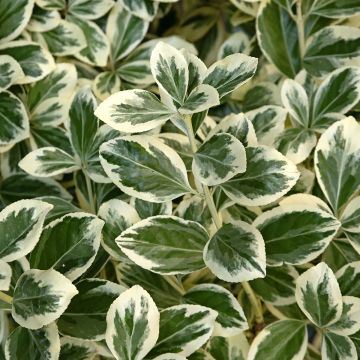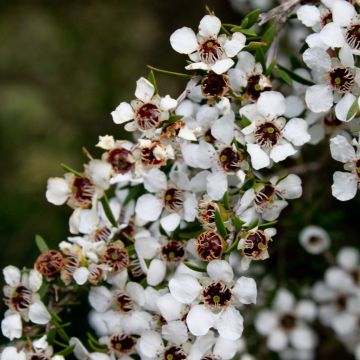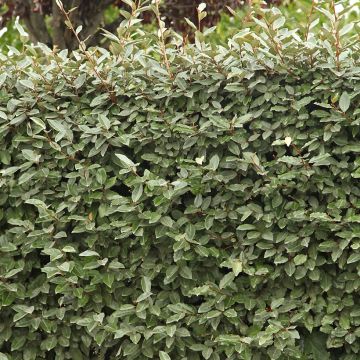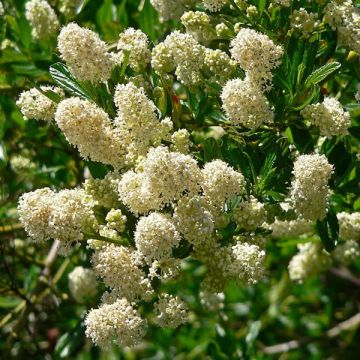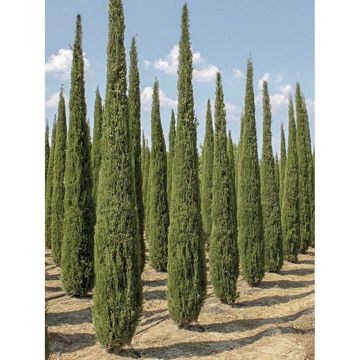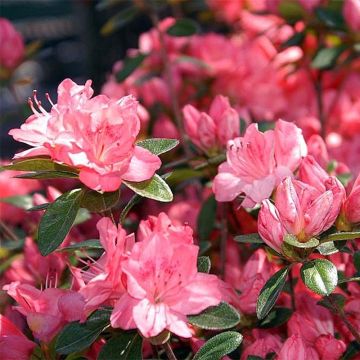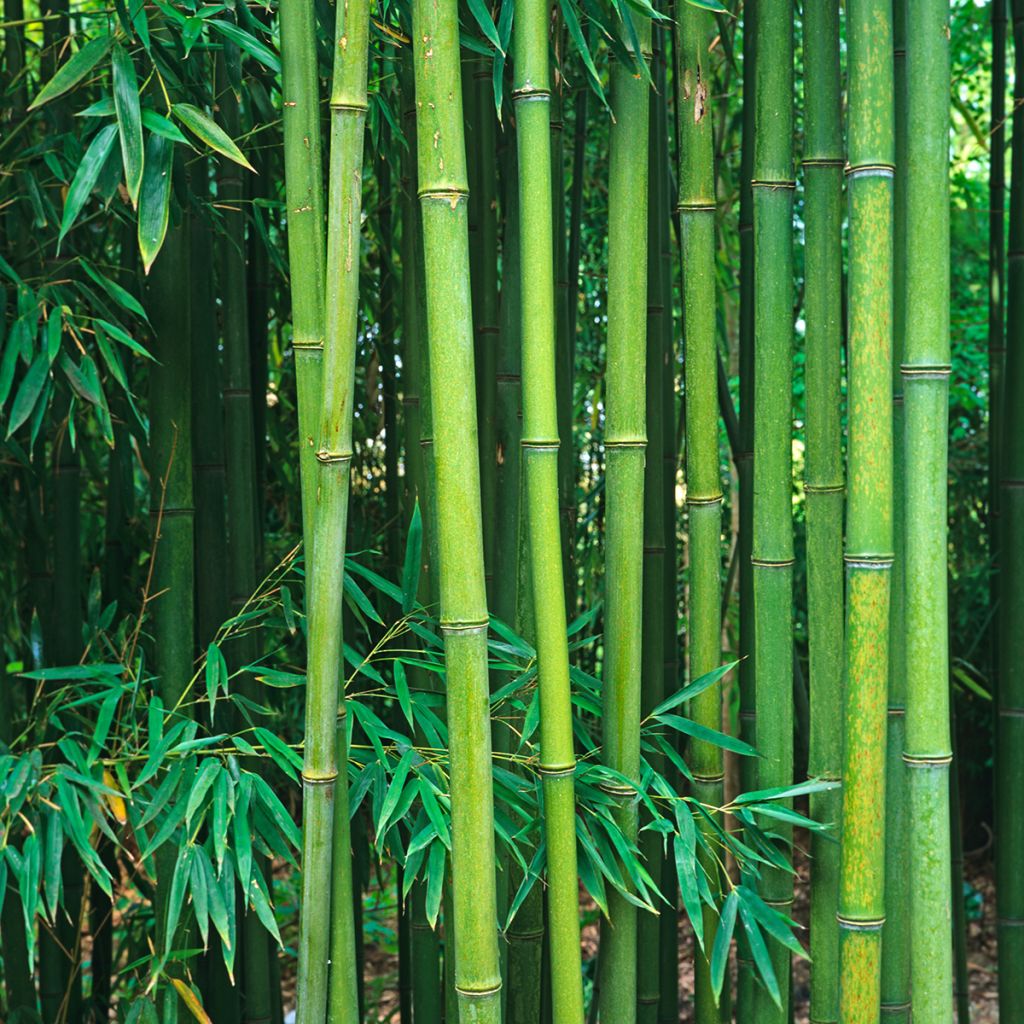

Phyllostachys viridiglaucescens - Green-glaucous Bamboo
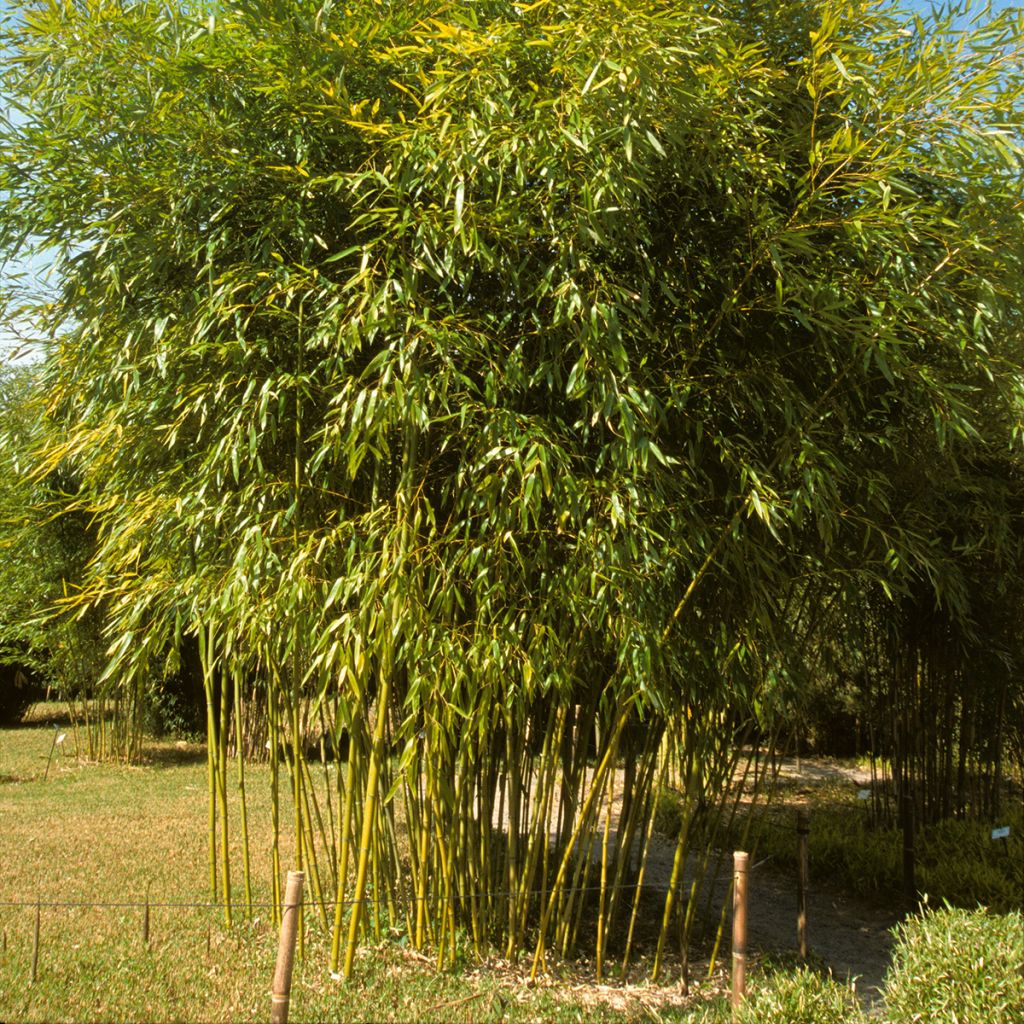

Phyllostachys viridiglaucescens - Green-glaucous Bamboo
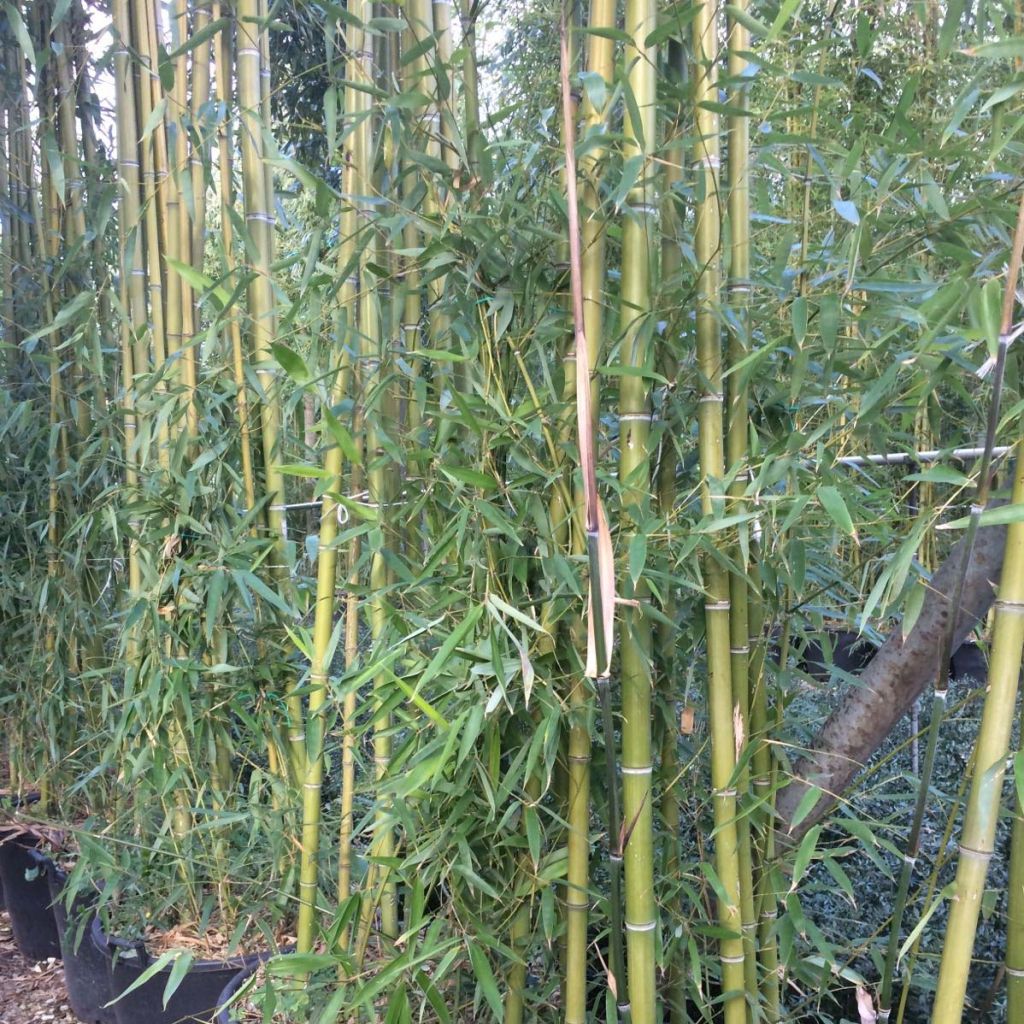

Phyllostachys viridiglaucescens - Green-glaucous Bamboo
Phyllostachys viridiglaucescens - Green-glaucous Bamboo
Phyllostachys viridiglaucescens
Green-glaucous Bamboo
Attention, very running bamboo! Reserved for the knowledgeable amateur, put a rhizome barrier.
Manu29, 07/06/2020
Special offer!
Receive a €20 voucher for any order over €90 (excluding delivery costs, credit notes, and plastic-free options)!
1- Add your favorite plants to your cart.
2- Once you have reached €90, confirm your order (you can even choose the delivery date!).
3- As soon as your order is shipped, you will receive an email containing your voucher code, valid for 3 months (90 days).
Your voucher is unique and can only be used once, for any order with a minimum value of €20, excluding delivery costs.
Can be combined with other current offers, non-divisible and non-refundable.
Home or relay delivery (depending on size and destination)
Schedule delivery date,
and select date in basket
This plant carries a 24 months recovery warranty
More information
We guarantee the quality of our plants for a full growing cycle, and will replace at our expense any plant that fails to recover under normal climatic and planting conditions.
Does this plant fit my garden?
Set up your Plantfit profile →
Description
Phyllostachys viridiglaucescens is a particularly lush giant bamboo that is recognized by its very straight, sturdy culms that transition from a very light green to a shiny dark green and then to yellow at maturity, as well as its evergreen foliage with a glaucous underside. Highly resistant to cold, unaffected by wind, adaptable to various growing conditions, this variety will only reach its full potential in fertile and moist soil. Its highly spreading habit and vigour allow for a fantastic mass effect in hedges or bamboo forests. Leave it enough space to express its full splendour!
Originating from western China, Phyllostachys viridiglaucescens (synonyms Phyllostachys Mazelli, Phyllostachys quilioi, Phyllostachys reticulata) belongs to the family of Poaceae. It is a kind of giant grass with woody stems and a highly spreading rhizomatous rootstock. This giant bamboo gets its species name, glaucescens, from the colour of its foliage: its leaves are lustrous green on the upper side, but glaucous green on the underside. It has an upright habit, particularly dense in stems and foliage. Capable of withstanding temperatures as low as -22°C, it prefers sunny locations and fertile, well-drained soil. Its highly spreading superficial rhizomes are capable of colonizing large areas over time. The plant produces young shoots or culms from March onwards. They then quickly shoot up towards the sky, reaching an average height of up to 8.50m (28ft), depending on growing conditions (7 to 12m (23 to 39ft)). These very straight and highly resistant culms can reach 7cm (3in) in diameter, even in our cool climates. Each culm evolves from tender green to shiny dark green covered in a bluish bloom, before turning yellowish-green. The evergreen to semi-evergreen leaves, depending on the severity of the winter, are dark green and narrow, lanceolate, tapering at the tip and measuring 12 to 15cm (5 to 6in) in length. Bamboo only flowers once in its lifetime, very late, and then it dies. The mechanism that induces simultaneous flowering of all individuals in a given region, or even on a whole continent, is still poorly understood.
Phyllostachys viridiglauscescens is not a demanding bamboo, but its growth will be severely restricted in poor, dry soil. It is often planted as a solitary clump, in a grove or as an infromal hedge where it quickly forms excellent windbreaks or privacy screens. In a contemporary-style garden, it pairs well with certain palm trees and large ornamental grasses such as Pennisetums, Deschampsias, or Miscanthus. It can be associated with other giant bamboos, playing with the colours of the culms. Its young shoots are edible and delicious, and its culms, whose strength rivals that of steel, are often used as stakes or for the construction of pergolas and fences. Its extensive growth is not well-suited for container cultivation.
Tip: Limit the spread of the highly spreading rhizomes of this bamboo by installing "anti-rhizome barriers," which are resin plates planted vertically in the ground, from the time of planting.
Phyllostachys viridiglaucescens is highly appreciated in China for its beauty, but also for the qualities of its wood used in construction, the production of parquet flooring and laminated furniture, as well as for papermaking.
Phyllostachys viridiglaucescens - Green-glaucous Bamboo in pictures
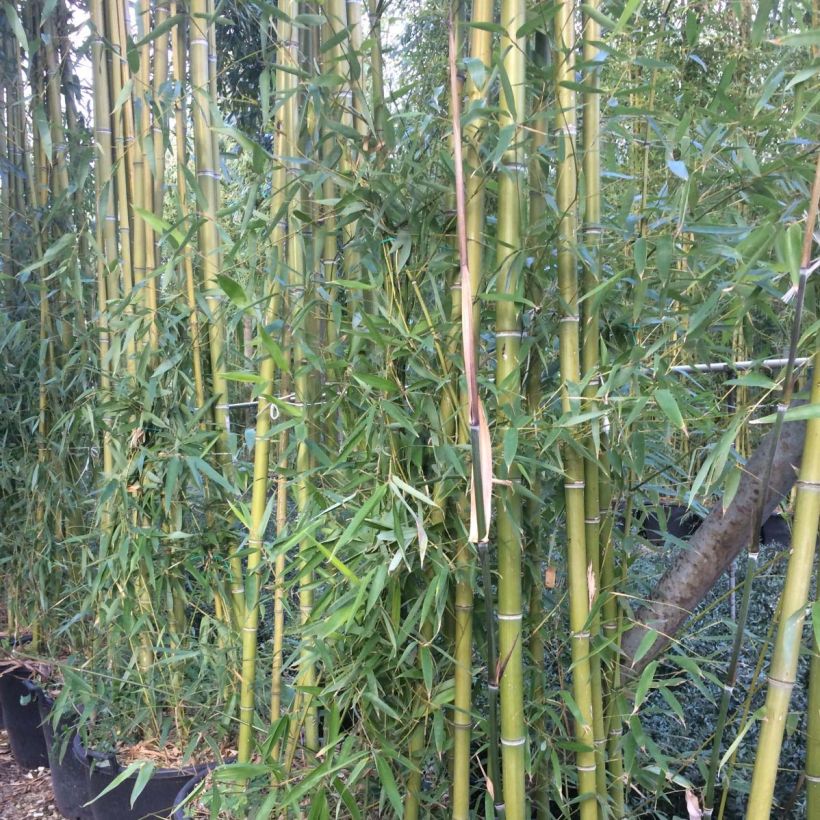

Plant habit
Foliage
Botanical data
Phyllostachys
viridiglaucescens
Poaceae
Green-glaucous Bamboo
China
Other Phyllostachys
View all →Planting and care
Phyllostachys viridiglaucescens is planted in spring or autumn with organic amendment, it appreciates fertile and fresh soils where its development will be more important. The ideal period is between September and November, when the plant develops its rootstocks. Resistant to -22°C (1°F), it still fears waterlogged soils in winter. It grows in rich, deep, firm but well-drained soil, moist in summer but not waterlogged, in sunny or lightly shaded locations. Mulch the young stump and water generously. Apply nitrogen fertilizer in February-March, then in July-August. Divide old clumps in spring. Shelter it from cold and dry winds in winter. Watch out for slugs that like young shoots.
Limit the spread of the trailing rootstocks of this bamboo by installing "anti-rhizome barriers" from planting, which are resin plates driven vertically into the ground.
This bamboo, although very tolerant, is well adapted to humid and cool climates. To help it better withstand the summer heat that prevails in some of our regions, plant it in deep soil and provide it with very abundant but spaced waterings: the rootstocks will sink deep into the soil to store moisture.
Planting period
Intended location
Care
Planting & care advice
-
, onOrder confirmed
Reply from on Promesse de fleurs
Similar products
Haven't found what you were looking for?
Hardiness is the lowest winter temperature a plant can endure without suffering serious damage or even dying. However, hardiness is affected by location (a sheltered area, such as a patio), protection (winter cover) and soil type (hardiness is improved by well-drained soil).

Photo Sharing Terms & Conditions
In order to encourage gardeners to interact and share their experiences, Promesse de fleurs offers various media enabling content to be uploaded onto its Site - in particular via the ‘Photo sharing’ module.
The User agrees to refrain from:
- Posting any content that is illegal, prejudicial, insulting, racist, inciteful to hatred, revisionist, contrary to public decency, that infringes on privacy or on the privacy rights of third parties, in particular the publicity rights of persons and goods, intellectual property rights, or the right to privacy.
- Submitting content on behalf of a third party;
- Impersonate the identity of a third party and/or publish any personal information about a third party;
In general, the User undertakes to refrain from any unethical behaviour.
All Content (in particular text, comments, files, images, photos, videos, creative works, etc.), which may be subject to property or intellectual property rights, image or other private rights, shall remain the property of the User, subject to the limited rights granted by the terms of the licence granted by Promesse de fleurs as stated below. Users are at liberty to publish or not to publish such Content on the Site, notably via the ‘Photo Sharing’ facility, and accept that this Content shall be made public and freely accessible, notably on the Internet.
Users further acknowledge, undertake to have ,and guarantee that they hold all necessary rights and permissions to publish such material on the Site, in particular with regard to the legislation in force pertaining to any privacy, property, intellectual property, image, or contractual rights, or rights of any other nature. By publishing such Content on the Site, Users acknowledge accepting full liability as publishers of the Content within the meaning of the law, and grant Promesse de fleurs, free of charge, an inclusive, worldwide licence for the said Content for the entire duration of its publication, including all reproduction, representation, up/downloading, displaying, performing, transmission, and storage rights.
Users also grant permission for their name to be linked to the Content and accept that this link may not always be made available.
By engaging in posting material, Users consent to their Content becoming automatically accessible on the Internet, in particular on other sites and/or blogs and/or web pages of the Promesse de fleurs site, including in particular social pages and the Promesse de fleurs catalogue.
Users may secure the removal of entrusted content free of charge by issuing a simple request via our contact form.
The flowering period indicated on our website applies to countries and regions located in USDA zone 8 (France, the United Kingdom, Ireland, the Netherlands, etc.)
It will vary according to where you live:
- In zones 9 to 10 (Italy, Spain, Greece, etc.), flowering will occur about 2 to 4 weeks earlier.
- In zones 6 to 7 (Germany, Poland, Slovenia, and lower mountainous regions), flowering will be delayed by 2 to 3 weeks.
- In zone 5 (Central Europe, Scandinavia), blooming will be delayed by 3 to 5 weeks.
In temperate climates, pruning of spring-flowering shrubs (forsythia, spireas, etc.) should be done just after flowering.
Pruning of summer-flowering shrubs (Indian Lilac, Perovskia, etc.) can be done in winter or spring.
In cold regions as well as with frost-sensitive plants, avoid pruning too early when severe frosts may still occur.
The planting period indicated on our website applies to countries and regions located in USDA zone 8 (France, United Kingdom, Ireland, Netherlands).
It will vary according to where you live:
- In Mediterranean zones (Marseille, Madrid, Milan, etc.), autumn and winter are the best planting periods.
- In continental zones (Strasbourg, Munich, Vienna, etc.), delay planting by 2 to 3 weeks in spring and bring it forward by 2 to 4 weeks in autumn.
- In mountainous regions (the Alps, Pyrenees, Carpathians, etc.), it is best to plant in late spring (May-June) or late summer (August-September).
The harvesting period indicated on our website applies to countries and regions in USDA zone 8 (France, England, Ireland, the Netherlands).
In colder areas (Scandinavia, Poland, Austria...) fruit and vegetable harvests are likely to be delayed by 3-4 weeks.
In warmer areas (Italy, Spain, Greece, etc.), harvesting will probably take place earlier, depending on weather conditions.
The sowing periods indicated on our website apply to countries and regions within USDA Zone 8 (France, UK, Ireland, Netherlands).
In colder areas (Scandinavia, Poland, Austria...), delay any outdoor sowing by 3-4 weeks, or sow under glass.
In warmer climes (Italy, Spain, Greece, etc.), bring outdoor sowing forward by a few weeks.






























